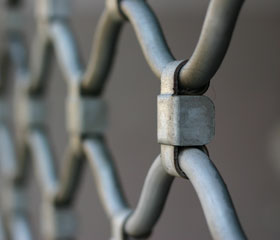

Safety systems that can transfer signals over Ethernet-based networks such as PowerLink can enjoy advantages in many different areas when compared to their hardwired safety circuit counterparts. One of these advantages is the money saved by reducing the overall amount of cabling required. Extensive cabling is a well-known source of errors, particularly in complex modular machines. It also negatively affects the time it takes to put a system into operation since conventional safety wiring requires that all of the options that will be used are known in advance. Using safety systems that can communicate directly, without having to be routed through the controller, makes it possible to comply with the standard at considerably higher line speeds, thus increasing productivity across the board. Drive components with Smart Safe Reaction directly on the motors shorten stopping distances and optimise safety clearances, making it possible to build machines that are smaller and cost less.
From the machine to the production line
In industries such as printing or packaging, a high level of automated production is achieved using linked machines and handling equipment. Branches like these therefore have a strong interest in extending network-integrated safety technology across entire production lines and applying its advantages to all the machines involved. Up until recently, however, organisational and technical obstacles have always prevented safety signals from being exchanged between machines and handling equipment via industrial Ethernet.
The organisational problem has to do with the fact that no machine manufacturer can anticipate and plan for all of the potential connection requirements for external equipment, let alone foresee how they should be implemented. Independent safety equipment installed ‘on the outside’ of a particular machine is also sometimes not able to trigger safe reactions deeper within that machine.
The technical obstacles result from incompatibilities between the individual safety-oriented control systems. With the exception of openSafety, they are often only able to work together with control hardware or fieldbus systems from that particular manufacturer. That is why it is still common to see wire linked machines with a shared E-stop circuit.
A safety interface means interoperability
openSafety is a network-integrated system available for transferring and processing safety-related signals regardless of the system bus being used to transfer data. And this is the reason why it is so easy to outfit an entire group of machines with a single safety technology even if the individual machines are produced by different manufacturers or come equipped with different safety features.
Despite this system independence, it is still improbable that a uniform safety standard will be established and accepted by every machine vendor. “For this reason, it is necessary for interoperability between different safety standards to be handled on the network layer so that it is possible to take advantage of its full functionality within the network,” explains Miodrag Veselic, technology manager for openSafety at B&R. “Together with OMAC, B&R is working on a specification for an interface protocol that allows safety-oriented system networking to be easily set up despite the different systems being used on the individual machines.”
Machine profiles are the key
The central element of a safety-oriented network of machines and systems is a uniform profile that describes the basic design of the safety-related elements on each individual machine or piece of handling equipment. “This pertains to a clear set of status signals including Estop, setup mode, limit value violations, etc, that span across systems and machines,” explains Veselic. “For each of these signals, the machine profile specifies whether it can be delivered by the device and respond safely.”
The simple structure of the data in the profile allows network-integrated safety systems from different manufacturers to be assembled into a network where every bit of basic safety-related information is available everywhere else on the network. This makes it possible for each individual machine to react to safety-related operating modes set at other locations, increasing the availability of machines and systems as a result. Since transferring safety signals via openSafety using the ‘black channel’ principle relies on the network’s communication layer, this type of network can be built using any Ethernet topology. An important aspect of the universal safety interface specification is the ability to add or remove devices without having to shut down or even stop the rest of the network.
Networked safety increases productivity
Machine operators benefit from the availability of machines, robots and handling equipment that can then serve as building blocks to create complex production systems with a sophisticated universal safety environment. This opens up new benefits for productivity that could not be achieved in the past using conventional technologies.
Smart safe reactions such as ‘Safely Reduced Speed’ (SRS) that can be active on multiple machines simultaneously, provides a safe state without having to bring the system to a complete standstill. Productivity is also enhanced by the ability to protect a whole group of systems by employing a comprehensive safeguarding mechanism for the entire line. This not only reduces transport routes and times, it also saves space because the safe response of neighbouring machines eliminates the need for a separate maintenance walkway for each part of the system.
“An additional advantage of safety related system networking based on the network layer is the high-quality, uniform diagnostics that can be carried out for all machines,” notes Franz Kaufleitner, product manager of integrated safety technology at B&R.
Ethernet-based safety technology is already standard in individual machines. With openSafety and the standardised safety interface definition being developed by OMAC and the EPSG, it will soon be possible to apply these advantages to entire groups of machines.
For more information contact Mike van Tonder, KlareTech, +27 (0)11 958 0222, [email protected], www.klaretech.com

© Technews Publishing (Pty) Ltd | All Rights Reserved